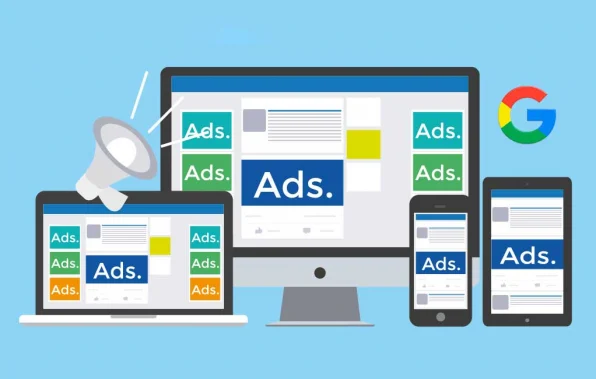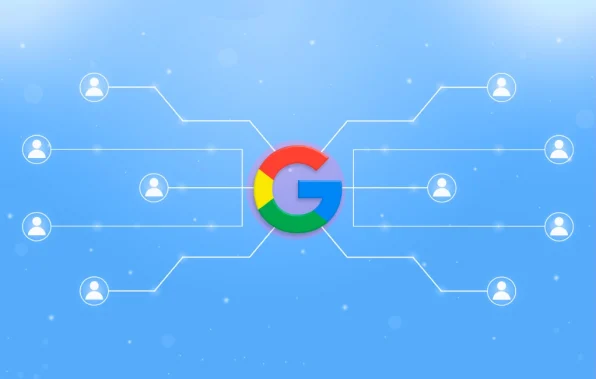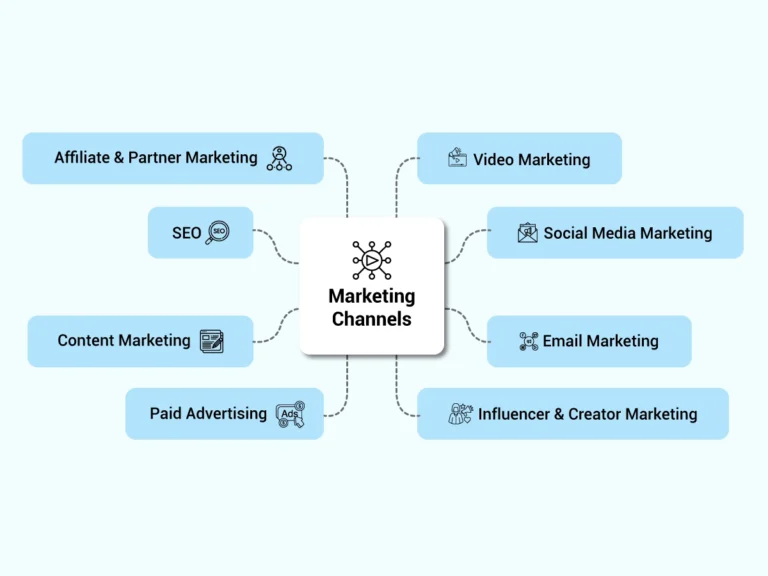Wondering how Google Ads seems to tailor its content to your every search? Or perhaps curious about the whole mechanics behind those eye-catching ads that effortlessly grab your attention?
Well, you are in for a treat!
Because, today, we are going to take you behind the scenes and have a detailed discussion on how Google Ads generate responsive search ads, tailored to your audience. Ultimately, boosting your online presence and driving desired results.
So, are you ready to supercharge your advertising game? Keep reading to find out!
What Are Responsive Search Ads?
Responsive Search Ads (RSAs) are like chameleons in the world of online advertising. They adapt to suit each user’s preferences by combining different headlines and descriptions. That is, instead of a static ad, RSAs create a personalized experience for every searcher.
In simple terms, Responsive Search Ads (RSAs) are dynamic ads that automatically mix and match different headlines and descriptions to create personalized ads for users. After all, who doesn’t want to feel cared for and valued more?
For example, let’s say you are selling shoes. With RSAs, if someone is keen on “free shipping,” the ad highlights that; for someone looking for a “30% discount,” the ad adjusts to emphasize the savings. On the other hand, if another user is all about comfort, the ad might highlight “Cloud-like Comfort.”

How Does Google Ads Generate Responsive Search Ads?
RSAs dynamically adjust their content to fit the context of a user’s search query, making your ad more relevant than ever. But, the million-dollar question, how does this digital shape-shifting happen?
First off, you provide Google Ads with a smorgasbord of headlines and descriptions. These can be anything from catchy taglines to irresistible offers – the more, the merrier!
Once you have laid out your linguistic feast, Google Ads gets to work. When someone enters a search query, the platform meticulously sifts through your headline and description options to create a tailor-made ad.
But here’s the genius part – Google Ads doesn’t stop at a single combination. That is, it crafts multiple variations of your ad, each fine-tuned to different search queries.
The cherry on top? Google constantly analyzes performance data to figure out which combinations resonate most with your audience. Over time, it refines and gets better – Optimize your RSAs in such a way that it speaks directly to what each user wants. Eventually, make your online marketing game more flexible and more effective than ever.
Benefits of Responsive Search Ads
Responsive Search Ads (RSAs) are like the superheroes of the advertising world. They bring a dynamic and flexible approach to the table, making your ad game stronger than ever.
Here are some of the top benefits of using Responsive Search Ads:
Pinpoint Precision With Headline Pinning
RSAs offers you the power of precision with headline pinning. You can designate specific headlines to always appear in certain positions, ensuring that your key messages take the spotlight.

Optimized Performance
RSAs aren’t just regular ads; they are the adrenaline shot your campaign needs. By automatically adjusting to match relevant search queries, they increase your chances of showing up in the right place at the right time.
More Real Estate, More Attention
With RSAs, your ad can appear in various formats and sizes. This means, more real estate on the search results page, increasing the chances of catching the user’s eye. Much like having a bigger billboard – who wouldn’t notice that?
Adaptability in Action
The digital world is constantly changing, and so are user behaviors. RSAs adapt to these shifts effortlessly, making them your go-to companion for staying relevant.
Whether it’s Black Friday madness or a cozy winter evening, RSAs ensure your message is always in sync with the current vibe, capturing attention like a spotlight on Broadway.
Time-saving Magic
Crafting individual ads for every possible search term is a Herculean task. RSAs save you that time by automating the process. You provide the building blocks, and Google assembles them into a masterpiece. Kind of having a virtual ad assistant – minus the coffee breaks!
Quality Score Charmer
RSAs have this irresistible charm when it comes to Quality Score. By dynamically adjusting to match search queries, they contribute to a higher relevance between your ads and users’ searches. Google rewards this with a higher Quality Score, which, in turn, can lead to lower costs and better ad placements.
Expanded Character Limits for Epic Storytelling
Remember the days of struggling with character limits in traditional ads?
RSAs break free from those constraints, providing you with expanded character limits for both headlines and descriptions. Now you can tell your brand story with the epic saga it deserves, capturing the attention and imagination of your audience.
Insights Galore
Want to know what resonates with your audience? RSAs provide valuable insights into which combinations perform best. Much like having a backstage pass to the audience’s preferences, allowing you to fine-tune your message for maximum impact.

How to Create Your Responsive Ad?
Creating a responsive ad is like crafting a mini masterpiece that captivates your audience, no matter the device they are using. So, let’s dive into the art of making your ad as responsive as a good friend who’s always there when you need them:
Start With a Strong Headline
Grab your audience’s attention right away with a compelling headline. Make it snappy, interesting, and relevant to your product or service. Remember, you have got just a few seconds to make an impression, so make it count!
Craft a Clear and Concise Message
Keep your message straightforward and to the point. After all, nobody wants to read a novel in an ad.
That is, clearly convey what you are offering, and highlight the benefits. Whether it’s a discount, a special offer, or a unique feature, make sure it’s crystal clear.
Eye-catching Visuals
A picture is worth a thousand words, right?
Hence, choose high-quality images or graphics that resonate with your brand and captivate your audience. Also, make sure that these visuals look great on both large desktop screens and smaller mobile devices.
Mobile-friendly Design
Speaking of mobile devices, make sure your ad is optimized for smaller screens. Test your ad on various devices to ensure that the layout, images, and text look appealing and are easy to read on smartphones and tablets.
Utilize Responsive Ad Platforms
Many advertising platforms offer responsive ad formats. Take advantage of these features to automatically adjust your ad’s size and layout based on the device it’s being viewed on. This, in return, will ensure a smoother user experience across different screens.
Call-to-action (CTA)
Don’t forget to include a compelling call-to-action!
Encourage your audience to take the next step, whether it’s making a purchase, signing up, or learning more. Use action verbs and create a sense of urgency to prompt immediate engagement.
Responsive Text
Tailor your ad copy to suit different screen sizes. Be mindful of character limits, and ensure that your message remains impactful and concise, regardless of the screen real estate available.
Testing, Testing, 1-2-3
Before launching your ad campaign, test it across various devices and platforms.
Check for any inconsistencies or formatting issues. This will help you catch potential problems and ensure a polished and professional appearance.
Some Additional Tips for Creating Headline
- Craft headlines that spark curiosity without giving away the whole story.
- Use numbers to make your headlines more eye-catching and organized. Such as, “5 Tips” > “Tips for Success.”
- Infuse your headlines with emotion to create a lasting impact on your readers. Joy, curiosity, nostalgia – go for it!
- Upgrade your adjectives to more vibrant and engaging ones to capture attention. Swap ‘good’ for ‘spectacular.’
- Pose a thought-provoking question or hint at a mystery to engage your audience.
- Keep your headlines concise and snappy for quick reader engagement.
- Experiment with A/B testing to discover the most effective headline variations.
- Sneak in keywords organically to enhance your headlines’ searchability.
- Before publishing, channel your inner editor to ensure clarity and curiosity in your headlines.
- Clear? Curious? Click-worthy? If yes, hit that publish button!

Understanding Machine Learning Algorithms by Google
Google, the tech giant that powers our searches, maps our world and even predicts what we might be craving for dinner, is also at the forefront of the machine learning revolution.
After all, they have pioneered a lot of algorithms that work behind the scenes, making our digital experiences smarter, faster, and more personalized.
Let’s start with the heavyweight champion of machine learning algorithms – TensorFlow. Developed by the brainiacs at Google Brain, TensorFlow is an open-source library that serves as the backbone of countless machine learning applications. Whether you are training neural networks for image recognition or creating your own AI masterpiece, TensorFlow has your back.
But wait, there’s more!
Google’s Gradient Boosting algorithm, known as XGBoost, is the go-to choice for Kaggle competitions and data scientists worldwide. And why not?
They are proving their mettle in tasks ranging from predicting house prices to identifying fraudulent transactions and whatnot.
And let’s not forget Google’s PageRank algorithm. Developed by Larry Page and Sergey Brin, this algorithm has certainly turned Google into the search behemoth we know today. In fact, it’s the ultimate reason you find the most relevant cat videos when you hit that search button – and isn’t that what the internet is all about?
As Google continues to push the boundaries of what’s possible, who knows what mind-blowing algorithms are about to come next? The adventure is only just beginning!
To Wrap Up
There you have it – the inner workings of how Google Ads generates responsive search ads! From dynamic content creation to audience targeting, these ads are certainly the driving force behind successful online campaigns.
So, the next time you see an ad that feels tailor-made just for you, remember the meticulous process that goes into making it happen. As technology continues to evolve, so too will the art of online advertising.
A short piece of advice: Stay curious, stay engaged, and let your ads do the talking!
FAQs
Google Ads allows up to 15 headlines and 4 descriptions for responsive search ads, giving you the flexibility to test and optimize your messaging effectively.
While headlines can be up to 30 characters and descriptions up to 90 characters, Google dynamically adjusts the size to fit different ad spaces – ensuring a seamless display across devices.
Well, Google suggests having at least 5 keywords per ad group, though there is no fixed number. And it goes without further saying that quality trumps quantity!
However, you must focus on relevant keywords. Start with a handful, monitor performance, and refine. It’s about finding the sweet spot that connects your ad with the right audience.









